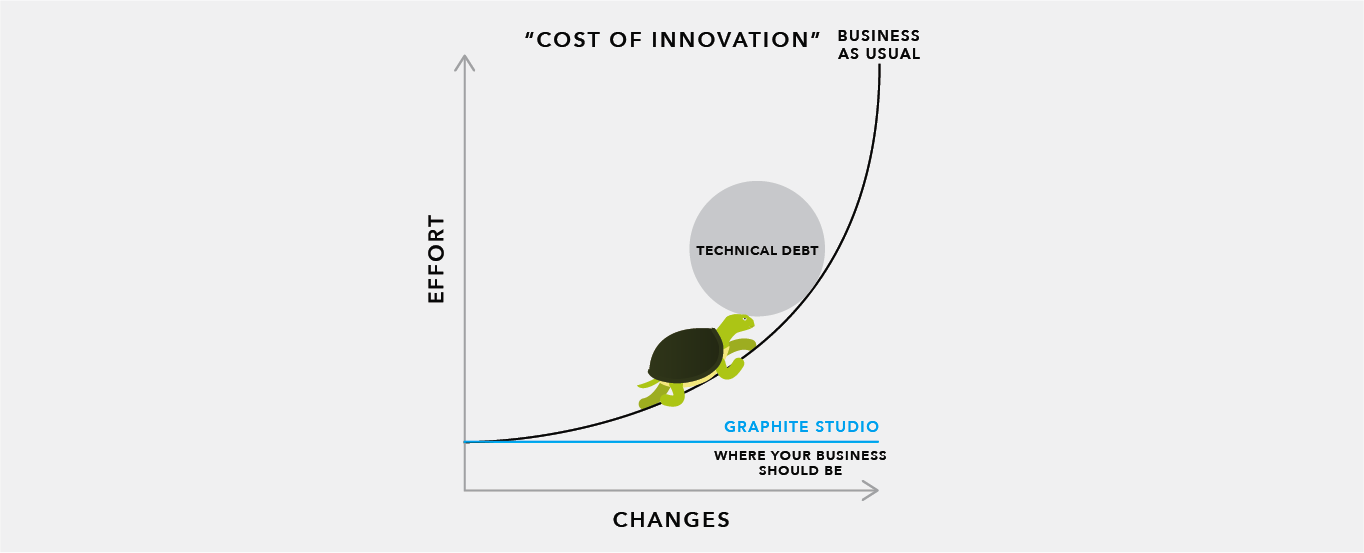Crushing Technical Debt Before It Crushes You
How do you approach different technical debt and what are some immediate plans you’ve made to deal with it?
When to Reduce Overall Technical Debt
Everyone competes for performance, customers, profits and meeting governance. From those creating the solutions, leading teams, answering to the business and funding innovation to the entire organization’s future, technical debt affects the performance of every facet of a company. You’re either moving towards a better tomorrow or finding your way to a bad Tetris™ game. Think layoffs or distressed buyouts, one iteration at a time, as you lose customers to more innovative, competitive choices.
But, while this demands application solutions, you rarely know what is really needed until well into the development process. So how do you design for something with so much uncertainty? It doesn’t seem fair, yet you’re still expected to deliver. You may be able to free up a third of your application maintenance staff, increasing your capacity to deliver, by delivering and continuously refactoring with the right No-code platform.
What Immediate Factors Must Be Considered When Changing or Enhancing a Design?
As projects mature and clients make more and more requests, layering the changes leads to compounding complexity, making future updates increasingly tedious. At some point, the application’s architecture is no longer ideal, maybe even counter-productive, eventually worth re-writing. With each iteration, you get closer to what is needed, but compromises are also made for the sake of speed. These shortcuts lead to snowballing "fix it later" code, and as a result, even more technical debt. This technical debt can cause almost twice the time to affect changes as when you first started. McKinsey reports 60% of CIOs see their technical debt rising, taking up to 20% of new initiatives’ budgets. Costs and budget impacts follow.
How Should Developers and Others Integrate Refactoring Into Their Workflow?
Our No-Code Platform, Graphite Studio, turns visual models into readable source code, eliminating growing complications, with every deployment. Only Graphite Studio offers Objective Model creation, combined with Refactoring, for any size application.
Refactoring Essentials for Everyone
Objective Modeling and Refactoring regenerates the solution, re-optimizes the application and even updates the database at each and every build. That means everyone, experienced or not, will have the built-in capability of refactoring.
Measuring Technical Debt’s Impact
With Graphite Studio, anyone can get a clean, technology debt-free application built after each and every change. Our customers tell us that eliminating common causes of application technical debt has allowed them to become three to six times more productive, reducing their overall cost of innovation.
Managing Technical Debt
So, what is technical debt? Overall technical debt is the accumulation of work that must be done in the future due to unsustainable development practices. It builds unintentionally. The faster the client’s need changes, the more pressure there is to quickly fix and re-model or architect later. Once you’ve compromised on good and necessary coding best practices for the sake of speed, you’re building debt faster than value.

Amid prior patchwork, technical debt also includes the additional time needed to affect required changes, updates or fixes. This double-cost is double-burdensome. Once a more ideal architectural and object model becomes apparent, how will you dedicate re-writes when so much more effort goes into keeping your clients’ delivery schedules. It’s like pushing a boulder up a hill, one small step at a time.
Knowing Types of Technical Debt Versus Their Causes
First, the elephant in the room
There are at least three leading causes of technical debt, the widening Upskill gap largely contributing to the 20% developer shortage being a major one. Languages, both new and evolving versions, intend to solve challenges as well as be more productive. Yet, as “the stack” continues to grow, we’re choking our industry with an ever-increasing amount to learn. Most must learn new languages on their own time rather than investing working weekdays for live training classes. This upskill gap constrains development as technical debt.
The second cause of technical debt
Technical debt mounds from never anticipated iterative changes (as described above), obsoleting the original model’s support. Restructuring your object model by hand must be carefully thought through, or even the most minor iteration becomes impractical, and wider re-writes are necessary to pay down mounting technical debt.
Finally…
…process, frameworks and tool costs are getting out of control. Having a single integrated development environment (IDE), or one that can work with tools you’re planning to keep, consolidates the cost and learning curves that contribute to technical debt. Think about testing, debugging, deployment, database creation, multiple security guardrails, etc. Empowering the developer saves them time by reducing their “stack” to one discipline and expands their capabilities in both the team’s and organization’s favor.
Welcoming Perfect Code and Technical Debt Reduction
Innovation is at the heart of pursuing competitive advantages. And creating the right application innovation requires iterations. Along the way, structure, models and architecture are at risk for obsolescence, and at some point, will no longer be able to ideally support the solution. The more technical debt, the more difficult it is to maintain the applications, which takes valuable resources from new initiatives. Software development following best practices, those already built-in to the right No-code platform, avoids compounding technical debt. Immediate benefits from trying this approach leads to overall portfolio healthiness, responsiveness and prosperity for all.
# # #
Byron Druss is the head of Marketing and Sales at Graphite GTC, makers of Graphite Studio™. Graphite Studio™ delivers the promise of low and no code development, enabling anyone to begin creating impactful solutions without having to wait for highly skilled resources. Working with their own developers, users can speed up innovation with the confidence that enterprise-class capabilities are automatically built-in and configurable. Graphite Studio™ enables you to gain competitive advantages with less resources, effort and technical debt. Just bring your domain expertise. Develop solutions, not code.
